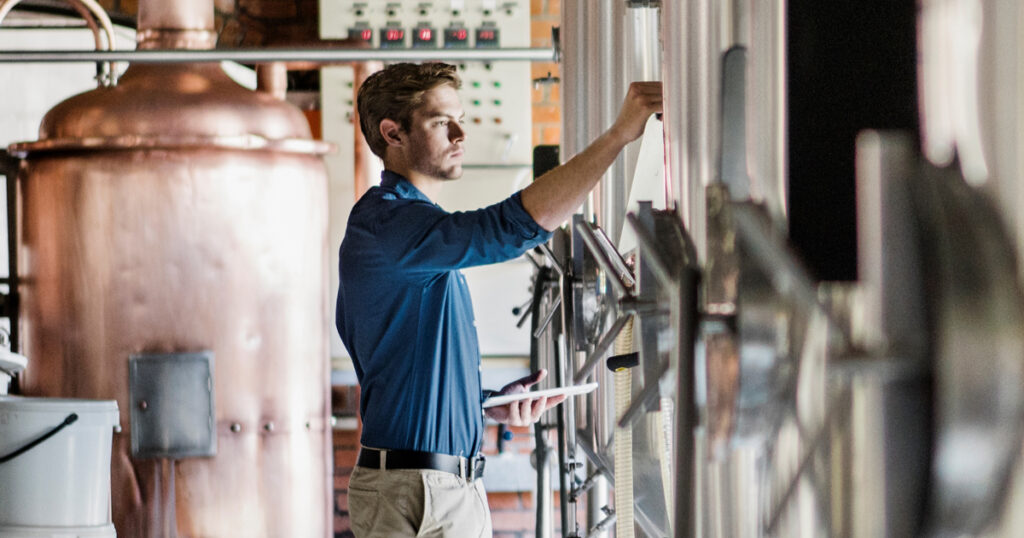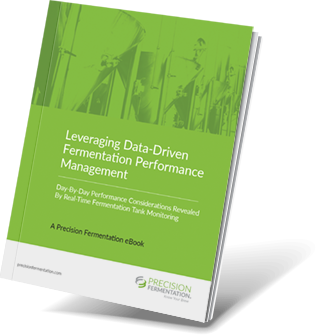Sampling vs. Monitoring

Brewing is a craft — an artful blend of inspired thinking and scientific analysis. Learning how to make a genuinely world-class beer calls for careful preparation and technique, exact measurements, and knowledge of how to adjust your recipe should you need to.
The Science of Brewing
On the surface, the brewing process is relatively straightforward. Brewers mix hot water with grain, add yeast and hops, and allow it to ferment. What isn’t simple is understanding the chemical processes behind each step and knowing how and what to measure to track the progress of a fermenting beer. Throughout the brewing process, many factors can affect a beer’s quality and result in a beer tasting sour, metallic, skunky, or just off.
The pH or mineral content of your source water, the presence of unwelcome bacteria, and contamination from wild yeast strains can ruin a beer. Detecting certain conditions and making real-time fermentation adjustments can make the difference between a successful run and a batch you’ll have to discard.
Know Your Brew
The image of a brewer staring into the murky depths at a hydrometer is iconic to the brewing industry, and it’s no wonder. Brewers need to learn vital information during every step of the process, from milling to brite tank. To ensure superior product quality, all available fermentation data needs to be analyzed for quality assurance. This is why brewers study their beer so intently during the brewing process.
This has traditionally been one of the most challenging and potentially frustrating aspects of professional craft brewing. Repeatedly tasting the beer during the fermentation and brewing process has been one of the few ways for brewers to collect important fermentation data. On top of that, the tools involved have remained essentially unchanged for hundreds of years.
Benchmark brewing was more art than science. The information collected could be imprecise — or outdated — the moment the observation is made. Instead of a precise understanding of exact chemical conditions inside the mash tun or fermenter, the best the brewer could do was make an educated guess about how the brewing process was proceeding.
The Sampling Process
When brewers talk about sampling beer, people may think of a leisurely beer tasting, but they’d be wrong. Brewers have sampled the beer in much the same way for hundreds of years, by hand with small tools that measure specific quantities of fluid drawn from a mash tun, fermentation tank, or other pieces of brewing equipment.
Samples are collected and analyzed from tanks actively used in the brewing process, but the sampling is only accurate to specific times during a beer’s life cycle. Moreover, it provides relatively little information.
A beer’s pH level will change dramatically in the first 24 hours after fermentation begins, so sampling a beer before that time elapses can give misleading data. The data is meager, with many breweries only having the time to sample active batches once or twice a day.
It’s a time-consuming and inefficient process that only shows a snapshot, as opposed to the full picture. Whether using hydrometers or refractometers, brewers who only sample are restricted to working with the limited fermentation data they can collect.
Monitoring the Brewing Process
The tools that now exist give head brewers and other brewing professionals precise, detailed data at every stage of the brewing process. By monitoring beer and collecting real-time fermentation data, brewers have more accurate information and knowledge of the conditions inside their brewing equipment.
This brings a level of quality assurance and control that brewers need that sampling does not. Instead of hazy forecasts or blurry snapshots, brewers now have the option of thousands of data points throughout the brewing process.
Monitoring is not only more informative than sampling, but it also saves time. Traditional sampling had to be done by hand. It required a head brewer or other brewery staff to move from tank to tank, pulling samples and making careful, and time-consuming, interpretations of the data.
Monitoring provides a constant, real-time, and ongoing stream of data, including trend analysis of fermentation data that indicates how the brewing process is going. The information can help fine-tune finished product quality and result in a superior brew every time.
How Monitoring the Brewing Process Saves Time and Money
The amount of data collected from monitoring gives brewers powerful control over the quality of their beer. It not only gives insights on parameters that sampling doesn’t, but it enables craft brewers confidence and the ability to address problems right away during the brewing process. Toward the end of the fermentation process, active monitoring can check the gravity of a beer 50 times a day, providing an exact moment-to-moment look into the detailed chemical processes underway.
Knowing what is happening to your beer at a specific point allows you to schedule tank turn times with precision instead of never knowing exactly when the right time is. This provides a level of control unavailable to brewers who only get snapshots of their beer at a given time through sampling.
Fermentation monitoring provides an ongoing understanding of the active brewing process and frees key brewery personnel for other duties. Monitoring also prevents the chances of having spoiled batches of beer and gives brewers the quality assurance tools to achieve superior product quality every time. All of which is not possible when sampling since this only gives you a snapshot of the brewing process.
Consistently Excellent Results
With the kind of data available with real-time monitoring, brewers can now produce consistent, high-quality beverages like never before. Studying the available data allows brewers to gain more insight into precise adjustments or changes they can make during the brewing process to duplicate the desired results.
With tools like the BrewMonitor System developed by Precision Fermentation, head brewers can enjoy peace of mind with real-time monitoring of the brewing process and get their nights and weekends back. Monitoring provides much more detailed and accurate information than sampling, and it saves time previously spent guessing what the best solution is.
Free eBook: Leveraging Data-Driven Fermentation Performance Management
Can fermentation management be improved, as a process? This eBook explores, in detail, how fermentation performance data analysis helps elevate product and business outcomes in a modern brewery, whether brewpub, microbrewery or regional craft brewer.
You will learn:
- Day-by-day performance considerations – learned through the extensive examination of real-time fermentation tank data.
- Key recommendations from the Precision Fermentation science team at each major step of fermentation – “Day zero” (i.e. before you pitch your yeast), the first 24 hours, and day two through the end of fermentation.
- Best practices – Activity to watch out for, broken down by each key measurement – Dissolved oxygen, gravity, pH, pressure, internal/external temperature, and conductivity.
- Key findings that can help you solve problems and improve your results.


